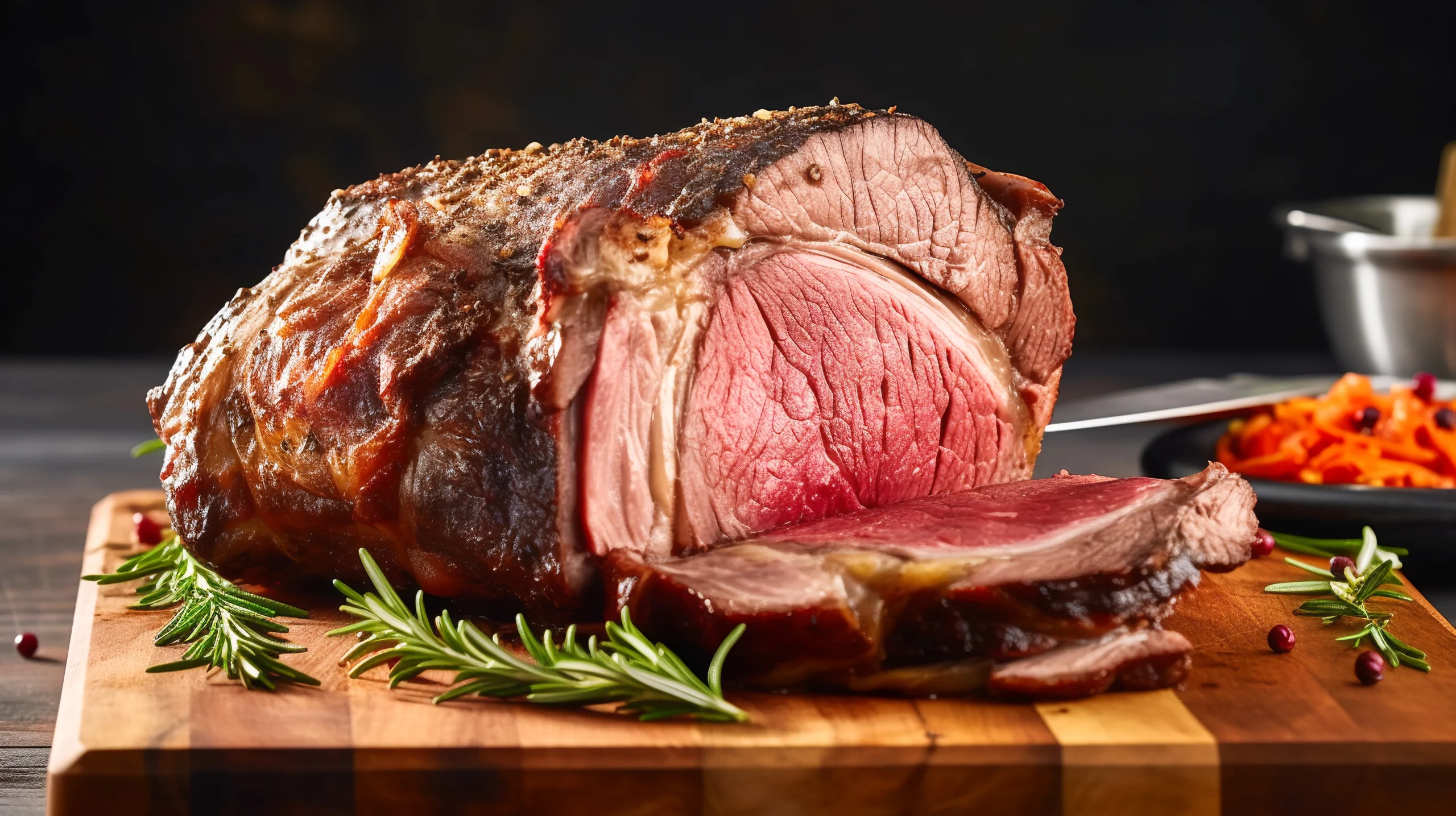A slow roasted prime rib is where patience meets perfection to deliver a mouthwatering symphony of flavors and tenderness and we are often asked the best way to prepare it. There are many schools of thought of how to do this and we have found this method to work regardless of your cooking equipment and allows your guests to indulge in the epitome of luxury of a slow roasted Prime Rib.
Ingredients
- Bone in Prime Rib Roast – Plan 1 bone per 2 people
- Spray Butter
- Willingham’s Marinade
- Yellow Mustard
- Willingham’s Original Mild Seasoning or Willingham’s Cajun Seasoning
- Lite Brown Sugar
Instructions
For best results prepare your prime rib the night before.
Trim any hanging bits of fat or meat left over from the butchering process. Do not remove all of the fat from the top side of the meat only trim off extra thick areas and have enough exposed meat to allow the seasoning to come in contact with the meat to create that much desired crust. We know some butchers will detach and tie back the bones to the roast, this is ok but we prefer to leave intact and cut the bones off after the cook.
Your portions may vary depending on the size of your roast the following is for a 4 bone roast.
Rub 2 tbls of Willingham’s Marinade into the meat and let sit for 10 minutes.
Rub 2 to 3 tbls of Yellow Mustard onto to roast
Combine 1 cup of Lite Brown Sugar with 1 cup of Willingham’s seasoning of your choice. Pat this mixture onto the roast – try not rub. You are trying to create a layer of seasoning to create a crust during the cooking process. Don’t worry the flavors of the seasoning will penetrate the meat during the rest process overnight.
Place the roast on plastic wrap and liberally spray with the butter.
Wrap tightly with additional plastic wrap and place in a pan meat side up in your refrigerator overnight.
Approximately 6 hours before your meal time remove the prime rib from the refrigerator and remove from plastic wrap and place meat side up in a roasting or aluminum pan. Sprinkle additional seasoning on prime rib on any areas that might need touched up. Allow to rest on counter for 1 hour.
While roast is warming up pre-heat your cooking equipment of choice.
Oven Method: Set your rack to the lowest position and set your temperature to the highest temperature. Most residential ovens max out around 525°. Do not use the convection option for this recipe.
Cooker/Grill: Look to achieve a temperature of 450° to 500° – pellet cookers, traditional grills or ceramic egg cookers is going to be the easiest.
After the cooking equipment is at desired temperature and the roast has come up in temperature (about an hour) its time to put the prime rib on. Here is where the oven and grill/smoker method diverge.
Oven Method: If you have remote probes you can place in the center most of the roast. Make sure if wired they do not create a gap in oven door seal. Leaving the prime rib in the pan, place in the oven for 50 minutes – DO NOT OPEN the oven from this point forward. After 50 minutes the prime rib will have developed a crust and sealed in all of those wonderful juices and flavors. Turn the oven OFF at this point and allow the residual heat to finish the cooking process. I can’t stress enough DO NOT OPEN the oven, put a sign it to keep nosy family members that like to peek. After about 4 hours the prime ribs should be medium well on the out slices and medium rare towards the center slices giving everyone that doneness they want. If turning the oven off makes you nervous you can always set to the lowest temperature your oven supports but keep in mind your cooking time may shorten to get the desired doneness. Allow the prime rib to rest for a minimum of 30 minutes prior to serving.
Cooker/Grill Method: You can place meat probes in the center most section of the prime rib if you desire. Leaving the prime rib in the pan, place on your cooker/grill and roast for about 1 hour to develop the crust. Reduce the temperature to 225° and allow to roast for 2 to 3 hours until the center section of the roast is 135°. Remove from cooker and loosely cover and allow to rest for a minimum of 30 minutes.
Carve into this slow-roasted prime rib to reveal thick, perfectly cooked slices. The exterior boasts a savory crust, while the interior offers a spectrum of pink hues, showcasing the mastery of slow-roasting techniques. Serve alongside your preferred sides, whether it be creamy mashed potatoes, roasted vegetables, or a rich red wine reduction
